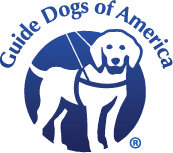
 AT&T Wireless Discount | Union Plus Smartphone Rebate Program | Mortgage & Real Estate Program | Car Rental Discount Program | Flower Discount Program | Union Member Assistance Programs | Auto Insurance Program | Motor Club Program | Goodyear Tire & Services | IAM Union Plus Credit Card | Disneyland & Disney World Discount | Theme Park Discount | Union Plus Scholarship | College Test Prep Discount | Legal Services Program | Life Insurance Program | Health Savings Program
AT&T Wireless Discount | Union Plus Smartphone Rebate Program | Mortgage & Real Estate Program | Car Rental Discount Program | Flower Discount Program | Union Member Assistance Programs | Auto Insurance Program | Motor Club Program | Goodyear Tire & Services | IAM Union Plus Credit Card | Disneyland & Disney World Discount | Theme Park Discount | Union Plus Scholarship | College Test Prep Discount | Legal Services Program | Life Insurance Program | Health Savings Program
 As we enter the new century, the only way to keep up with change is with education. The William W. Winpisinger Education and Technology Center is the IAM’s most visible sign of our commitment to provide a world class educational facility to train future IAM leaders. The Winpisinger Center teaches what it is to be a trade unionist. By studying labor history and the role unions play in our society, students learn that unions are more than service organizations. We are part of a larger movement toward economic and social justice with dignity on the job. W3 Education and Technology Center
As we enter the new century, the only way to keep up with change is with education. The William W. Winpisinger Education and Technology Center is the IAM’s most visible sign of our commitment to provide a world class educational facility to train future IAM leaders. The Winpisinger Center teaches what it is to be a trade unionist. By studying labor history and the role unions play in our society, students learn that unions are more than service organizations. We are part of a larger movement toward economic and social justice with dignity on the job. W3 Education and Technology CenterWe Invite You to Join the Partnership
 As wonderful as modern technology is, no invention comes close to the incredible accomplishments of a bright, willing, well-trained guide dog. Since its founding through donations by the International Association of Machinists and Aerospace Workers Union in 1948, Guide Dogs of America in Sylmar, California has helped blind men and women recover their ability to move freely and regain independence through partnership with these remarkable animals.
As wonderful as modern technology is, no invention comes close to the incredible accomplishments of a bright, willing, well-trained guide dog. Since its founding through donations by the International Association of Machinists and Aerospace Workers Union in 1948, Guide Dogs of America in Sylmar, California has helped blind men and women recover their ability to move freely and regain independence through partnership with these remarkable animals.
We receive no government funding
Due to the fact that our services are free of charge to the blind community, we depend solely on voluntary donations, bequests, fund raising events, clubs and organizations to support our program. Your donation or bequest to Guide Dogs of America helps continue this legacy to provide the gift of freedom, mobility and independence through the use of these loving and loyal dogs.
Every dollar we receive is put to good and immediate use.
To breed, raise and train a fully-qualified guide dog and provide instruction in the use of these special dogs for safe mobility costs approximately $38,000. Because of the continued support we receive from our donors, GDA has succeeded in providing all its services – guide dogs, specially designed harness, individualized in-residence training and lifetime follow-up, at no cost, to more than 2,500 blind recipients. Guide Dogs of America is certified by the California State Guide Dog Board and is a member of the U.S. Council of Dog Guide Schools and the International Federation of Guide Dog Schools. The school is a non-profit charitable organization and all contributions made to Guide Dogs of America are tax-deductible to the extent provided by law.
Partners: A Labor of Love
Guide Dogs of America uses Labrador Retrievers, German Shepherds and Golden Retrievers. The majority come from our own breeding program.  At about 8 weeks, puppies are placed with volunteer foster families where they’ll play and cuddle, as well as learn house manners and basic obedience skills. Our puppy raisers are on duty 24 hours a day, socializing their little students to the real world—introducing them to crowds of people, small children, elevators, buses, the noises of a parade, the quiet of a church—every possible situation they will encounter with their future human partner.
At about 8 weeks, puppies are placed with volunteer foster families where they’ll play and cuddle, as well as learn house manners and basic obedience skills. Our puppy raisers are on duty 24 hours a day, socializing their little students to the real world—introducing them to crowds of people, small children, elevators, buses, the noises of a parade, the quiet of a church—every possible situation they will encounter with their future human partner.
“My guide dog has improved my confidence BOTH physically AND emotionally to a level I never thought I would be able to attain. I could never think of being without him by my side.”
– Paul Jordan & Rawhide
The young dogs return to our Sylmar facility evaluation at 15 to 18 months, and continue to follow a four to six month training program that will qualify them for their new career. Our veterinary care is state-of-the-art and includes any medical support the guide dog in training may require. Guide Dogs of America makes a lifetime commitment to the health, happiness and overall wellbeing of these gifted dogs. Our state-licensed trainers serve a 3-year apprenticeship at Guide Dogs of America, becoming adept at working with blind individuals as well as training guide dogs. Their work lays the foundation for the next step: pairing the right dog with the right human partner to help both achieve their highest potential.
With my guide dog I am striding along faster and more confidently. He has deeply affected my life and outlook for I am in better health and am much more independent.
– David Bates & Stanley
 Students reside in our comfortable dormitory for a month while they learn to work with and care for their new companions. Students and guide dogs are together round-the-clock: during meals, classroom sessions, and recreation. Staff attention is devoted exclusively to helping the new partners become comfortable with each other as they develop their skills.
Students reside in our comfortable dormitory for a month while they learn to work with and care for their new companions. Students and guide dogs are together round-the-clock: during meals, classroom sessions, and recreation. Staff attention is devoted exclusively to helping the new partners become comfortable with each other as they develop their skills.
“I didn’t think I had any love left to give until l got this guide dog puppy. She’s going to do great things someday!”
– Puppy Raiser
Trust is a special language between partners. Companionship, love and mobility without stress —these are the attributes that develop confidence and freedom. The “simple” ability to get around affects the kind of life a blind person can have. The added confidence that comes from working with a guide dog can influence their decision to try new social activities, to have a career or return to school.
 |
“My guide dog is my friendly eyes.” – Robert Acosta & Arlo You can change a life. To meet the demand, in a timely manner, we constantly need additional funds to train more dogs and graduate more teams. In order to continue this wonderful program —and expand it—we need you to become a partner too. Please add us to your annual contribution list and keep us in mind for special fund-raising projects. |
|
Click here to view the Guide Dogs of America website. Click here to view the Puppy Cam . |
Union Member Rights and Officer Responsibilities Under the LMRDA and the CSRA
The Labor-Management Reporting and Disclosure Act (LMRDA) and the Civil Service Reform Act (CSRA) guarantee certain rights to union members and impose certain responsibilities on union officers. The Office of Labor Management Standards (OLMS) enforces many LMRDA and CSRA provisions while other provisions, such as the bill of rights, may only be enforced by union members through private suit in Federal court. Union Member Rights Bill of Rights – Union members have:
• equal rights to participate in union activities
• freedom of speech and assembly
• voice in setting rates of dues, fees, and assessments
• protection of the right to sue
• safeguards against improper discipline Copies of Collective Bargaining Agreements– Union members and nonunion employees have the right to receive or inspect copies of collective bargaining agreements. Reports – Unions are required to file an initial information report (Form LM-1), copies of constitutions and bylaws, and an annual financial report (Form LM-2/3/4) with OLMS. Unions must make the reports available to members and permit members to examine supporting records for just cause. The reports are public information and copies are available from OLMS. Officer Elections – Union members have the right to:
• nominate candidates for office
• run for office
• cast a secret ballot
• protest the conduct of an election Officer Removal – Local union members have the right to an adequate procedure for the removal of an elected officer guilty of serious misconduct. Trusteeships – Unions may only be placed in trusteeship by a parent body for the reasons specified in the LMRDA or standards of conduct regulations for CSRA employees. Prohibition Against Certain Discipline – A union or any of its officials may not fine, expel, or otherwise discipline a member for exercising any CSRA or LMRDA right. Prohibition Against Violence – No one may use or threaten to use force or violence to interfere with a union member in the exercise of CSRA or LMRDA rights. Union Officer Responsibilities Financial Safeguards – Union officers have a duty to manage the funds and property of the union solely for the benefit of the union and its members in accordance with the union’s constitution and bylaws. Union officers or employees who embezzle or steal union funds or other assets commit a Federal crime punishable by a fine and/or imprisonment. Bonding – Union officers or employees who handle union funds or property must be bonded to provide protection against losses if their union has property and annual financial receipts which exceed $5,000. Labor Organization Reports – Union officers must:
• file an initial information report (Form LM-1) and annual financial reports (Forms LM-2/3/4) with OLMS.
• retain the records necessary to verify the reports for at least five years. Officer Reports – Union officers and employees must file reports concerning any loans and benefits received from, or certain financial interests in, employers whose employees their unions represent and businesses that deal with their unions. Officer Elections – Unions must:
• hold elections of officers of local unions by secret ballot at least every three years.
• conduct regular elections in accordance with their constitution and bylaws and preserve all records for one year.
• mail a notice of election to every member at least 15 days prior to the election.
• comply with a candidate’s request to distribute campaign material.
• not use union funds or resources to promote any candidate (nor may employer funds or resources be used).
• permit candidates to have election observers.
• allow candidates to inspect the union’s membership list once within 30 days prior to the election. Restrictions on Holding Office – A person convicted of certain crimes may not serve as a union officer, employee, or other representative of a union for up to 13 years. Loans – A union may not have outstanding loans to any one officer or employee that in total exceed $2,000 at any time. Fines – A union may not pay the fine of any officer or employee convicted of any willful violation of the LMRDA. The above is only a summary of the LMRDA and the CSRA Standards of Conduct. Full texts of the LMRDA (29 U.S.C. Sections 401 to 531) and the CSRA Standards of Conduct (29 C.F.R. Sections 457.1 to 459.5) may be obtained through the website of the U.S. Department of Labor’s Office of Labor-Management Standards (www.dol.gov/olms), by writing that Office at 200 Constitution Ave., NW, Room N-5619, Washington, DC 20210, or in many public libraries.
